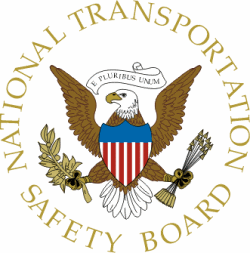Helicopter Substantially Damaged, But No One Was Injured
Cold weather flight testing on a Polish-registered PZL Swidnik
SW-4 helicopter resulted in an accident but fortunately no
injuries. The testing proceeded to plan, but developed problems
with the controls after the hydraulic system was shut off. The
pilot was not able to overcome the control problems, and the
helicopter impacted the ground.

NTSB Identification: ANC12LA017
14 CFR Part 91: General Aviation
Accident occurred Sunday, January 15, 2012 in Fairbanks, AK
Aircraft: PZL-Swidnik SW-4, registration: SP-SSW
Injuries: 3 Uninjured.
This is preliminary information, subject to change, and may
contain errors. Any errors in this report will be corrected when
the final report has been completed.
On January 15, 2012, about 1423 Alaska standard time (AST), a
Polish registered PZL Swidnik SW-4 helicopter, SP-SSW, sustained
substantial damage when it collided with terrain, following a loss
of control while maneuvering at the Fairbanks International
Airport, Fairbanks, Alaska. The Polish production test pilot and
two flight test technicians on board were not injured. The
helicopter was operated by PZL Swidnik S.A., Swidnik, Poland, as a
14 CFR Part 91 visual flight rules (VFR) test flight when the
accident occurred. Visual meteorological conditions (VMC) prevailed
at the Fairbanks Airport. The local area flight originated at the
Fairbanks International Airport about 1315, and company flight
following procedures were in effect.
During a telephone interview with the National Transportation
Safety Board (NTSB) investigator-in-charge (IIC) on January 19, the
on site flight test manager for PZL Swidnik reported that the
accident helicopter was undergoing cold weather flight testing at
the time of the accident. He said that after the helicopter
departed from the Fairbanks International Airport, the flight test
crew flew a series of preplanned flight test maneuvers to the
southeast of the airport. After completing the one hour flight, the
crew returned to the Fairbanks International Airport to begin
series of hover tests, with the helicopter's hydraulic systems
disabled, to simulate an in-flight hydraulics failure.
The flight test manager said that as the pilot hovered the
helicopter above the departure end of Runway 2L, the flight test
technician turned the hydraulics system off to begin the
simulation. As part of the prearranged flight test plan, the pilot
hovered the helicopter sideways, first to the right and then to the
left. He said that as the pilot began to hover the helicopter to
the left, the cyclic and collective became very stiff and ratchety,
followed by a forward and left movement of the cyclic, which the
pilot was unable to physically overcome. The helicopter
subsequently descended, the left skid struck the runway, and the
helicopter rolled to the left, with the main rotor blades striking
the runway. As the main rotor blades struck the runway, the
helicopter continued to roll onto its left side, sustaining
substantial damage to the fuselage, tail boom and main rotor drive
system.
The closest weather reporting facility was the Fairbanks
International Airport, Fairbanks. At 1432, an Aviation Routine
Weather Report (METAR) was reporting, in part: Wind, calm;
visibility, 6 statute miles with ice fog; clouds and sky condition,
500 feet few, 1,100 feet broken, 2,500 feet broken; temperature,
minus 36 degrees F; dew point, missing; altimeter, 31.05 inHg.
 ANN's Daily Aero-Term (05.07.25): Terminal Radar Service Area
ANN's Daily Aero-Term (05.07.25): Terminal Radar Service Area ANN's Daily Aero-Linx (05.07.25)
ANN's Daily Aero-Linx (05.07.25) Classic Aero-TV: Anousheh Ansari -- The Woman Behind The Prize
Classic Aero-TV: Anousheh Ansari -- The Woman Behind The Prize NTSB Prelim: Bell 206B
NTSB Prelim: Bell 206B Airborne-NextGen 05.06.25: AF Uncrewed Fighters, Drones v Planes, Joby Crew Test
Airborne-NextGen 05.06.25: AF Uncrewed Fighters, Drones v Planes, Joby Crew Test



